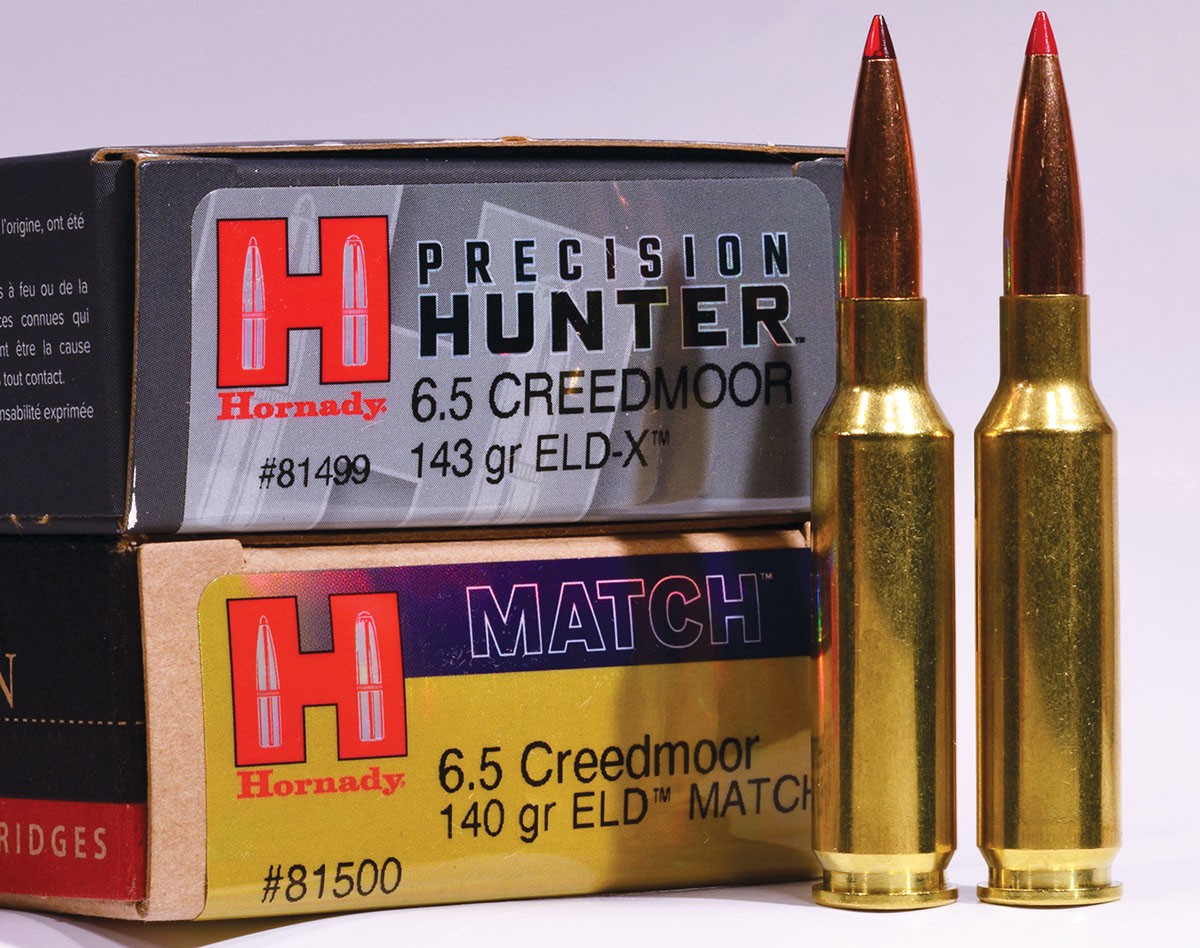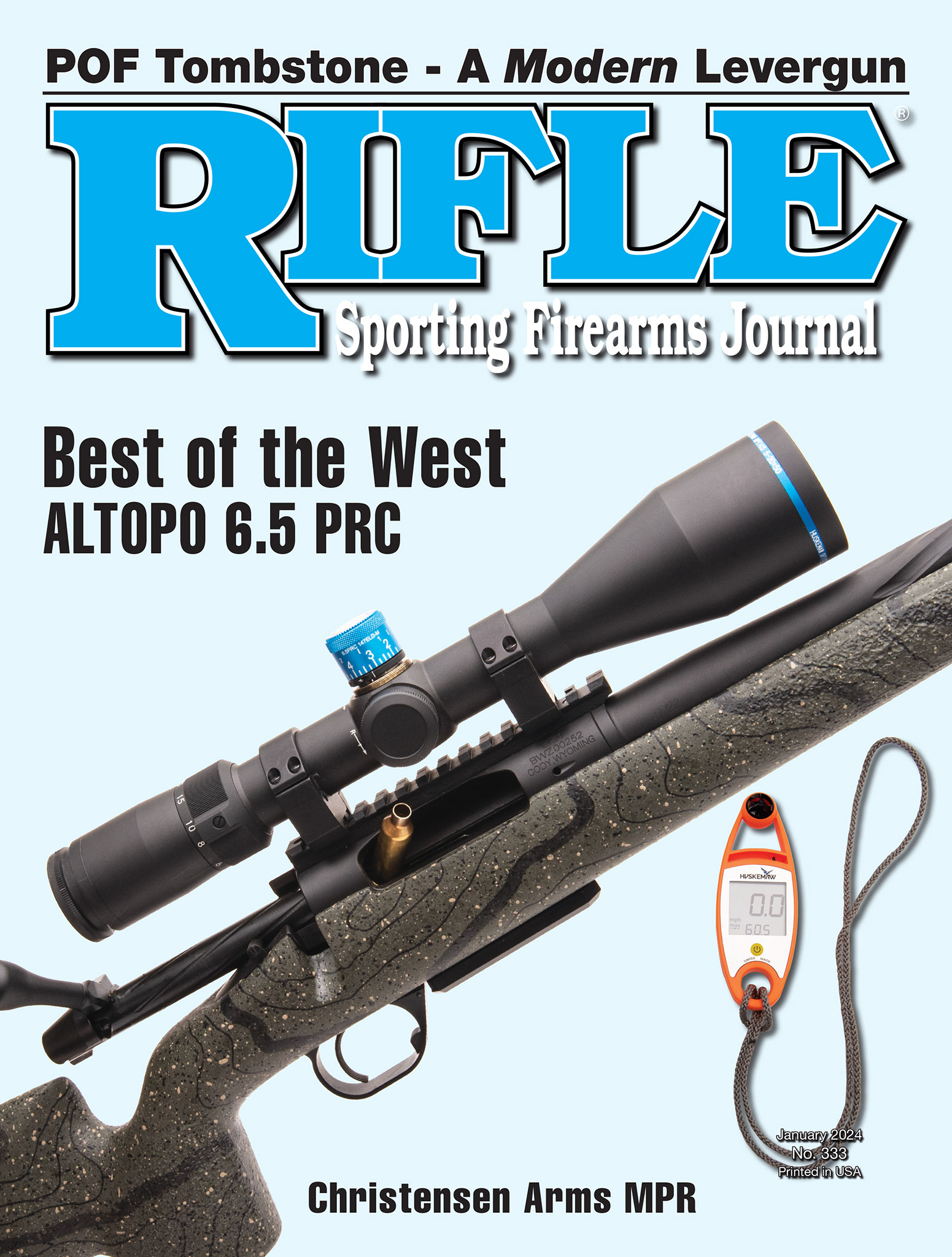Walnut Hill
Baggage – and the Lack Thereof
column By: Terry Wieland | January, 24

For many, the blank was filled in by the 6.5x55, while others mentioned the 260 Remington, or even the 6.5 Remington Magnum or, more obscure still, the 256 Newton. All are .264 diameter, aka, 6.5mm, and all launch a 140-grain bullet at 2,600 to 2,800 feet per second (fps).
Off the top of my head, and without reference to any book, I can name at least two dozen 6.5mm cartridges. Some are less powerful by a few hundred fps, others are more powerful, but most are in the approximate range mentioned above. That being the case, why did we need another?
I must confess I was among those who asked the question, couched in the “What will it do…?” terms that greet any new cartridge, factory or wildcat. Also, as a long-time admirer of 6.5s, and the old Swedish military cartridge in particular, I was rather resentful of the Creedmoor.
But in fact, Hornady had very good reasons for starting fresh with a whole new cartridge, even if ballistically it did nothing more than duplicate what others had been doing, or almost doing, or potentially doing, for a century. The reason is, in a word, baggage.
Any cartridge is only as good as the rifle in which it is chambered, and virtually all the comparable cartridges were hobbled in some way by the rifles available. In turn, these limitations are reflected in the cartridge specifications dictated by the Sporting Arms & Ammunition Manufacturers’ Institute (SAAMI). For example, it sets maximum pressure limits allowed for factory ammunition. So, if a cartridge was originally chambered in a rifle that is seen as weaker, such as the Swedish 1896 Mauser, it will be loaded to lower pressures, and hence, lower velocities.
Other limiting factors also come into play. The 6.5 Remington Magnum, a short, belted case introduced in 1966, with the company’s short, bolt-action, Model 600 carbine, should have been a world-beater – on paper, at least. Plus, it still could be, if you chambered it in an appropriate rifle with a longer action and magazine, with adequate freebore and the right rifling twist rate.
Alas, the Model 600’s short magazine limited overall cartridge length, which, in turn, pretty much ruled out the use of heavier, longer bullets because they would be seated so deeply, that they would encroach on powder capacity. The original factory ammunition used a 120-grain bullet at a reported 3,030 fps, which is neither fish nor fowl in 6.5mm terms – neither light enough for varmints, nor heavy enough for big game and serious long-range shooting.
Anyway, in the case of the Model 600, with its 18.5-inch barrel, it was questionable whether anyone could get anywhere near 3,030 fps. A modern factory load is listed with a 140-grain bullet at 2,559 fps, which is 240 fps less than the same bullet in a 6.5x55.
There is a strange symmetry between the two cartridges when it comes to reported velocities and barrel lengths. In the 1980s, when the only 6.5x55 ammunition available was from Norma, it claimed 2,855 fps for a 140-grain bullet, but that was from a 28-inch barrel; around the same time, Remington made its velocity claims based on a “non-standard” long barrel.
What would the 6.5x55 actually do? I had a Parker-Hale lightweight rifle with a 22-inch barrel, and was able to get 2,800 fps with a Nosler 140-grain Partition, using an unquotable heavy charge of IMR-4350. It was deadly accurate and I collected a Dall sheep with it in Alaska in 1990. Based on that, I question whether much more is possible with that cartridge, either by adding a few inches of barrel or reducing bullet weight by 10 or 15 grains.
It’s now accepted wisdom that the great potential of any 6.5 is with a long, heavy-for-caliber bullet, but 50 years ago, anything more than 129 grains was dismissed as being too heavy and slow, and the 6.5x55’s original military bullet of 154 grains was laughably archaic.
That odd weight – 129 grains – originated with America’s oldest 264, the 256 Newton. For whatever reason, Charles Newton adopted British usage, which measures caliber by bore diameter, not groove diameter. Anyway, Newton determined that 129 grains was the ideal bullet weight in a 6.5. Just to show how such decisions have long-term influences, when one of the smaller loading companies began offering 6.5x55, 80 years later, it was loaded with a 129-grain bullet.
Today, 140 grains is considered light in a 6.5, with Very Low Drag (VLD) and similar bullets weighing up to 160 grains (Hornady InterLock). Berger’s Extreme Outer Limits (EOL) 6.5 is 156 grains.
For years, Europeans – and the Swedes in particular – tried to tell Americans that a long “pencil-like” 6.5 bullet at moderate velocities was enormously effective, both on targets and big game. But we didn’t believe it, and this skepticism was displayed in various ways. We now know that a long bullet needs a fast twist rate to be stabilized adequately at moderate velocities. Well, the Swedes knew it in 1894, which is why the Mauser 96s had such a tight twist – 1:7.5 inch or thereabouts. It’s only recently that 6.5mm rifles here have been given ultra-tight twist rates.
I can remember reading articles that dismissed the 6.5x55 as being inefficient when such a short case was chambered in a long action like the Mauser 96. There was a reason for that, and it involved overall cartridge length, bullet seating depth and powder capacity required to achieve velocity. In other words, again, almost the exact opposite of the situation with the 6.5 Remington Magnum, which was a too-long cartridge in a too-short action.
Out of all this, it’s easy to see why Hornady, realizing the great potential of the 6.5, but also recognizing the pitfalls of trying to adapt an old cartridge, elected to start with an absolutely clean slate. Not only was the 6.5mm Creedmoor new, meaning factory ammunition could not be used in an unsuitable old rifle, but the specifications for everything to do with it were tailored for maximum performance. That included chambers and freebore, optimum barrel length, rifling twist rate, everything. Chamber length aside, magazines were long enough to accommodate long bullets seated well out – pretty much a “sine qua non” for the precision accuracy demanded today.
As it turned out, the 6.5mm Creedmoor has been seized upon by both hunters and target shooters, and has proven itself excellent for both purposes. Sometimes, the hyperbole has gone right over the top. For example, four or five years ago, a guy who was looking for a rifle to control pests on his farm in Mississippi asked me if it was true that the Creedmoor shot “absolutely flat out to 400 yards, and had no recoil.” Well, no, I answered and it does have the drawback that you still have to hit the target.
Such invocations of the supernatural aside, it’s a great cartridge, but it doesn’t make use of any insight or technology that wasn’t known a century ago. Long-for-caliber and low-drag spitzers were being used in 303 British match ammunition in 1910, the Swedes knew about fast twist rate in the 1890s, and the penetration qualities of long bullets with high sectional density such as the 6.5s were being put to use on elephants before the Great War.
Sometimes, though, the genius lies not in finding something new and groundbreaking, but in taking the old and putting it all together.


